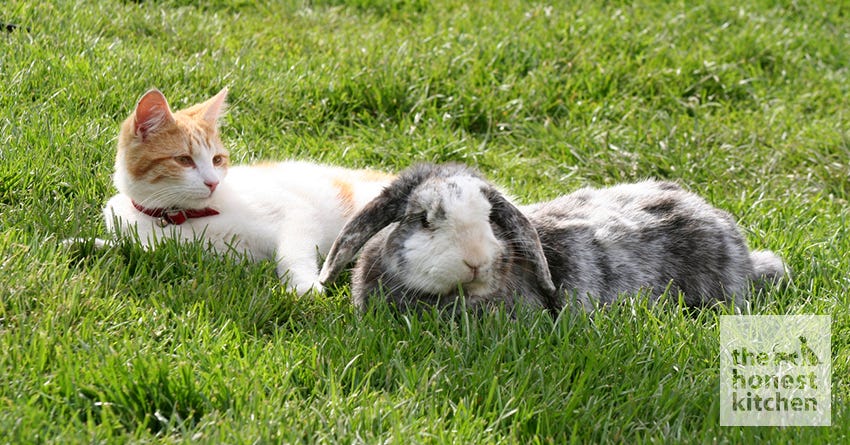Can Your Cat Cohabitate with Other Small Animals?

As a cat owner thinking about bringing another small animal into your home, there’s a lot to mull over.
Besides a another feline or dog, which small animals have a greater chance of cohabitating with your cat? Do these furry creature stand a chance at living in peaceful harmony with cats, which are natural predators? We talked with certified cat behavior consultant and author Marilyn Krieger to gain some insights on which small animals have a greater chance at living in the same household as your cat, and how to best introduce another small animal into your home.THK: In your experience, which small animals do cats tend to get along with the best?
 Marilyn Krieger: Keep in mind that cats are predators. Generally speaking, cats instinctually view guinea pigs, hamsters, birds and other small animals as potential meals. You’ll also want to consider what species the small animal is. Typically smaller animals are stressed by cats. Since cats are a danger to rodents and other small animals, by instinct they try to stay away from felines.
Keep small animals in secure cages, out of reach of cats—preferably in rooms that aren’t accessible to felines. As a general rule, I do not recommend trying to integrate small animals with cats. It could end tragically.
Marilyn Krieger: Keep in mind that cats are predators. Generally speaking, cats instinctually view guinea pigs, hamsters, birds and other small animals as potential meals. You’ll also want to consider what species the small animal is. Typically smaller animals are stressed by cats. Since cats are a danger to rodents and other small animals, by instinct they try to stay away from felines.
Keep small animals in secure cages, out of reach of cats—preferably in rooms that aren’t accessible to felines. As a general rule, I do not recommend trying to integrate small animals with cats. It could end tragically.


